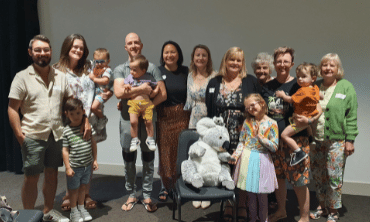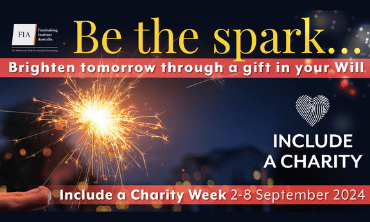Share
Director of the Charles Bonnet Syndrome Foundation, Scot Muirden, recently hosted a two-part Live Q&A series for Glaucoma Australia, where he answered some of the most commonly asked questions about Charles Bonnet Syndrome.
Below is a summary of the key points shared in his presentations.

What is Charles Bonnet Syndrome (CBS)?
CBS is a condition where visual hallucinations are experienced by people who don’t have a mental health issue. These hallucinations are sometimes called phantom images. The condition can affect people at any age, but it’s more likely to occur if you have significant vision loss (as often occurs in later life).
There are two types of phantom images that can be experienced:
- Simple: Geometric patterns, grids, row of dots, colourful cobwebs or honeycomb
- Complex: Buildings, flowers, animals, faces, figures, vehicles, and landscapes.
What are the features of Charles Bonnet Syndrome?
The features of Charles Bonnet Syndrome are:
- Some form of vision loss
- Recurrent phantom images.
- The person (quickly) understands that what they “see” is not real.
- No noticeable decline in thinking or memory.
- The images are purely visual. Phantom images do not extend to other sense modalities, for example, images are not heard, tasted, smelt, or felt.
- When diagnosing CBS, it’s important that a comprehensive medical history and an eye examination is undertaken to ensure there are no other medical reasons for the hallucinations.
How many people are affected?
It is thought that about one in every three people with vision loss may experience hallucinations, making CBS quite common. Despite this, and numerous medical studies, the condition continues to be unfamiliar to many medical practitioners. A Danish study last year estimated that worldwide over 47 million people live with CBS.
What is the likelihood of glaucoma patients developing CBS?
Studies suggest that somewhere between 8-19% of all people living with glaucoma will develop CBS.
How can CBS be managed?
There is currently no safe and effective medical treatment for CBS. Even so, there are some ways to help manage the symptoms of the syndrome:
- CBS often occurs during times of quiet wakefulness so try to be more engaged in everyday life (eg. social interaction, physical exercise).
- Try to talk to others going through something similar. There is strength in numbers and tends to reduce the feeling of isolation.
- Consider low-vision rehabilitation (eg. visual aids) to maximise one’s current vision and this may in turn ease symptoms.
- Talk it over with your doctor or counsellor (although be aware that not all are familiar with the syndrome)
- Some people report that the hallucinations disappear if they move their gaze from side to side or up and down.
- Try altering the environment or setting that you are in. For example: if it’s dark, turn on the light, or if you’re standing up, sit down. If your eyes are open, blink several times. If you notice the visions are occurring inside the home, try going outside for a while.
- Lighting can sometimes be a factor. An orthoptist can advise on the best type of lighting for your home based on your eye condition.
- Contact the CBS Foundation for further support.
How can you support a loved one with CBS?
Find out everything you can about CBS if you have a loved one with it. Understanding the condition and providing reassurance to them can help to reduce feelings of anxiety and helplessness.
You can also consider joining the CBS online community. It is open to both those directly experiencing the syndrome as well as loved ones and carers. There’s also the Charles Bonnet Syndrome Foundation which you can contact for resources and support.
How can health professionals help people with CBS?
If you are a health professional, we encourage you to reassure your patients experiencing visual hallucinations that it’s a common condition and not a sign of dementia or mental illness. Remind them that the frequency and duration of CBS hallucinations tends to decrease over time and CBS hallucinations affect only vision, and not hearing, smell, taste or touch.
If a person says they feel their visions touch them or hear their visions talk to them, then this may indicate something else (clinically) is at play. Further, if the person seems convinced that what they “see” is real, then this could be a red flag too. In such cases, a further clinical assessment is advised.
To assist your patients if they are frightened, distressed or fear they are going mad, you may like to encourage them to join support groups to meet other individuals suffering from this often-unknown syndrome.
If you missed watching either of Live Q&A sessions, you can check out the recordings below.
What is Charles Bonnet Syndrome?
Living with Charles Bonnet Syndrome


